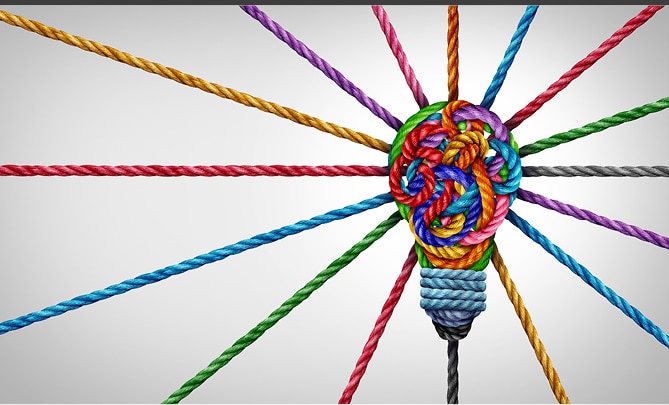
Better ADHD Management through Knowledge
July 18, 2022
ADHD Strong: Using a Strengths-based Approach to ADHD
July 18, 2022by Mrs. Miriam Gettinger
Attention Deficit Hyperactivity Disorder affects 90 million people globally. Diagnosed by a 2:1 ratio in boys over girls, 7-10% of the student population aged 5-17 is affected, although anecdotally, teachers report a much higher percentage. Genetic factors comprise 75% of the risk and one third to half of affected children will continue with symptoms into adulthood. Characterized by high levels of distractibility and impulsivity, the lack of emotional self-regulation impacts the student’s academic progress, social interaction, and behavior, impeding educators’ instruction and effectively demoralizing both parties.
The situation is far more acute currently as anxiety levels have doubled over the Covid period and students are functioning two to three years behind in their executive functioning skills, particularly in initiating/engaging with instruction and assignments and transitioning from activities which students perceive to be salient to non-salient activities, two critical areas of challenge for students with ADHD. Additionally, society has become overtly angry, aggressive, and dysregulated emotionally, creating negative role modeling for these students, who tend to struggle with emotional regulation.
Marilee Sprenger, neuroscientist and author of the book Learning and Memory cites the significant correlation of focus with chronological age, explaining that children can focus for their age plus two minutes (so a six-year-old can be expected to fully attend for 8 minutes,) peaking around age 15 when the maximum focus time is set at 20 minutes. Not shocking then, exacerbated by the digital age in which we live, that we are ’edutained’ by 15-minute Ted Talks, the 8-minute Daf Yomi and other accommodations to our societal short attention span. ADHD defines our culture whether or not we are specifically diagnosed and in the school setting we are impelled to change the learning activities frequently within our instruction to address this collective need. Gone is the 'sage on the stage' model for limudei kodesh as well as chol instruction. The sage has been replaced by interactive engaging learning activities in pairs, small groups, or independently, to hone textual skills and determine mastery of content - graduated in length depending upon the age we teach - with opportunities for movement and conversation built into the fabric and flow of the period lesson.
ADHD and Yiddishkeit
ADHD and its presentation of layered anxiety undermine critical components of academic and social growth, but more significantly, insidiously challenge spiritual and moral underpinnings of Jewish education and practice. Time management skills affirm our belief that man can imbue time with holiness (מקדש ישראל והזמנים, למנות ימינו כן הודע, החדש הזה לכם), and unlike the Hellenists Greeks who deified the natural forces of time, we can consecrate moments and control the flow of our days through Rosh Chodesh and the luach.
Moreover, the underlying construct of kavanah is paramount to tefilla and to the meaningful practice of mitzvot. Mitzvot are neither random behaviors performed with no preparation and forethought, nor robotic activities performed perfunctorily. Proactive thinking and calculation of the risk and impact of our decisions rather than reactive apologies for reckless impulsive behaviors is inherent in our judicial system: שוגג vs. אונס. R’ Shimon’s selection of the מדה טובה שידבק בה האדם was הרואה את הנולד.
Teaching students to appreciate the consequences, intentional or most likely unintended of their actions, is imperative in inculcating inherent responsibility for their behaviors. Drawing out the ripples in the pond of concentric circles of how the behavior affected themselves, others around them, and ultimately their reputation and standing in their peer group, is the stuff of true chinuch moral guidance and genuine training for life lessons. חשבון הנפש is inherent to all spiritual and ethical growth and internalization of goal setting and a growth mindset a noble goal for all students to aspire to regardless of the specificity of their diagnosis.
Whole-class Strategies for Students with ADHD and Without
Thirty years ago, a psychologist of note told me that for students with ADHD, medication alone would not solve their issues, nor would therapy and pragmatic strategies; rather the secret sauce lay in pinpointing the unique blend of both, enabling these students to be successful both academically and socially… valuable advice I have heeded ever since. That said, the strategies which I have found most successful are, in fact, those which are directed at the whole class and not specifically only at the ADHD population.
Providing movement breaks, chunking assignments, visual clocks, graphic organizers and organizational checklists, such as editing or packing-up protocols, color-coding materials and folders by subject, utilizing spike cushions and exercise balls for seating, and facilitating fidgets, such as jelly noodles, cubes, Thera putty, and Pop-Its (my 6th graders often release stress entering my classroom utilizing the giant Pop-It that hangs on the wall) are equal opportunity strategies for today’s students.
Use ‘backwards design’ instruction - not unlike Understanding by Design - as an executive functioning strategy to prevent initiation anxiety – כל התחלות קשות – amongst all students by helping them first visualize the end. Here’s a backwards Get Ready/Do/Done:
- Done - what will task/assignment look like when done and charting that out,
- Do - focusing on how to do the work to match the done image, which then prompts the basic question of step three,
- Get Ready - what resources/supplies do I need to get ready to tackle this assignment, including a plan to overcome obstacles.
Similarly, transitioning and shifting between activities can be done for all students with ADHD students in mind. Teach students to count down and develop a realistic five-minute plan (i.e., finish the chapter, not the book,) use the term ’pause’ rather than stop, which is an all-or-nothing, loaded word, triggering ADHD students in particular, and accommodate the need to gradually break from a preferred activity to a less desirable one; for example, by allowing the students to draw at their desk after recess, as that places them in their seat with pencil and paper in hand, ready to resume academic structure. (Ward and Jacobson, 360 Thinking Executive Functioning Program)
The goal is to get students to independently use these stopping, starting, and shifting techniques on their own. They will do this as they build their ability to self-monitor, assessing what they need, followed by choosing the appropriate strategy. Positive self-talk, chunking, using the Get Ready/Do/Done template, or pictorial flowchart for how to proceed when stuck, utilizing classroom resources or a peer buddy, and pre-teaching and preparing students the day before for what lies ahead, are all pragmatic things that teachers can do to promote self-monitoring.
Additionally, teacher cue cards discreetly placed on students’ desks during the lesson visually clarifying disengagement or the need for redirection in the form of “Old Maid” cards with the object being to reflect and change course and get the card removed by the end of the period to avoid consequences or further communication with parents or administration, respectfully assist students in the self-monitoring process without negative attention and public humiliation.
Finally, student use of rating checklists to score at least 7 or 8 assignments before and after completion helps them learn to realistically build a framework for overcoming initiation anxiety in modulating their emotional responses and internal conversations. What seemed like a daunting 10 to begin with ended up as a 3, facilitating confidence and propelling them forward with the next challenge.
Nature Deficit
There is one more thing to keep in mind as we work to support all students, especially those with ADHD. It has been theorized that a ‘variant’ of ADHD today is NDHD, which references nature deficit and its correlation to hyperactive behavior. Our hyper-busy lives chock full of extracurricular activities, tutoring and enrichment classes, as well as our heightened stranger danger fear, prevent us from giving children as much outdoor imaginative play and exercise time as they physiologically and psychologically need to grow and develop stamina and resilience. Schools must cut recess time to squeeze in academic requirements and many do not have adequate gym facilities or art/music expression opportunities built into the school day itself. All children, adolescents and adults increase focus and hone mental concentration and deeper thinking through daily natural excursions walking or preferably running. (Last Child in the Woods, Luav)
To get a better idea of the experience of people with ADHD, I asked several questions to a 4th grade boy, a 10th grade girl, and teacher with ADHD.
MG: Describe your challenges to focus and control impulsive behaviors in school.
4th grade boy: I am always losing stuff. My cubby and desk are always a huge mess. I forget where and what my homework is and where I put it. I play with things during class and don’t always follow the lesson so even though I am a good student, I don’t feel smart. I cry very easily and am so sensitive because I can’t control my negative thoughts and am always rushing to do things without thinking which get me in trouble with others. I wish I had a do-over button.
10th grade girl: When I’m unfocused in class, it intensifies all my emotions causing me to get angry and immediately shut down. Generally, I can navigate out of my feelings, being a sophomore now. However, when I do not have a direct way of communicating with my teacher to tell them I'm struggling, my learning experience can be heavily disrupted. I find that I hear and don't listen in class, tending to answer questions without even hearing the prompt to simply engage when it is unwarranted and then feel discouraged after the fact. The impulsivity aspect affects me socially and academically when I interrupt conversations with my friends and find it difficult to navigate talking in a respectful manner. Academically, I decide hastily to put off assignments and procrastinate studying for major tests which causes me to build a lousy sleep schedule at times.
Teacher with ADHD: Despite my mom's efforts to get my sister and I both the resources we needed, I went undiagnosed until I was an adult. As a student, I was attentive when things interested me, but when it was something I didn't care about, it was much more difficult to retain information. I tested well but when I was put in accelerated classes for a while, I could not keep up, though all my test scores indicated that I should be able to excel in those classes. I was the student who would fidget, doodle, bounce my leg, or tap whatever writing utensil I had in my hand on my desk. I still have a difficult time sitting still in meetings or in professional development. My impulsivity was shown in things like shouting out answers while raising my hand or taking something from a classmate that I might need. Since these were things that I was reprimanded for, I learned to mask these behaviors. I would sit on my hands during class discussions or stay quiet during those times. I learned to ask for things that I wanted to use or needed. As I got older and school got more challenging, my inattentiveness would show up in things like not turning in assignments on time or waiting until the very last minute to finish projects.
As a teacher, I know my inattentiveness can cause significant issues. If I'm distracted by something or hyper-focused on something, I might miss something that a child is doing that could cause harm to themselves. That fact is not something I take lightly, so I try to maintain an environment that helps me to stay focused on the children. Luckily, I work with the age I do, so having to focus on one activity for too long is hardly ever an issue in the classroom.
MG: Which strategies help you the most?
4th grade boy: I like having fidgets in class to help me focus so I don’t cut up paper. The desk and cubby checklists help me get organized as do the color-coded subject folders. Also being able to stand and move around during class really helps me. I really benefit from the Old Maid cards showing me privately when I am distracting others or not doing what I should be doing. The pictures are funny, and I am motivated to not be stuck with a card when the class ends!
10th grade girl: First off, I have a few teachers I feel comfortable talking to before and after class if I'm feeling particularly uncomfortable learning that day and they usually find ways to accommodate me. I find that most of the time I adjust myself and have little problem doing so, but the extra support from my teachers and establishing clear lines of communication helps to ease that burden I hold on myself. When I feel myself getting overwhelmed, I like to dismiss myself just to go to the bathroom or walk around the campus so I can clear my mind and go back to learning undisturbed. While my middle school caught on when I was feeling upset before I even knew, I now have to find ways to calm down quickly and independently instead of immediately reaching out for help from others.
Teacher with ADHD: The strategies that have worked for me are things that I did not start doing until I was in college and had to fend for myself a little more. Now, everything goes on my calendar: bills, school schedule, due dates for work projects, everything. Not only does it go in my phone calendar, but I also often find that the act of writing them on a physical calendar helps. Visual reminders are a huge lifesaver. Post it notes are my friends. I try to make sure that whatever I need for the day is sitting by the door so I can grab it as I leave in the morning. I try to make my tendency to hyper-focus on things that work for me. My best friend and I started a podcast based on a fixation with urban legends, so at least that one could be somewhat productive.
Meetings are hard. The expectation is still that most people will just sit and listen. For those, I try to have a fidget cube in my pocket, so I can move a little without distracting anyone else. In the few meetings or PDs that I have been in where the presenter is aware that some people just need to move, I have been able to retain more information because I was much more comfortable. I know there are still times when it is necessary for me to be able to "sit like an adult."
And I chose a career path that works for ADHD. There is constant sensory input. I get to play and create all day long with my students. I understand their impulsiveness and can prepare for that. There is always a new way to look at things in the classroom. We do have a schedule to follow, but the schedule is fluid. We can give the children extra time to explore if they are really enjoying an activity. That also means that if I'm really enjoying the interaction during that activity, that I can see it through to its creative end.
Mrs. Miriam Gettinger has been a principal for the past 30 years, currently at the Hasten Hebrew Academy of Indianapolis and previously at the South Bend Hebrew Day School as well as at the helm of Bais Yaakov High School of Indiana. A graduate of Beth Jacob Teachers Institute of Jerusalem as well as Touro College, she has taught Limudei Kodesh to all ages from elementary to adult for over 40 years. Contact Mrs. Gettinger at [email protected].

